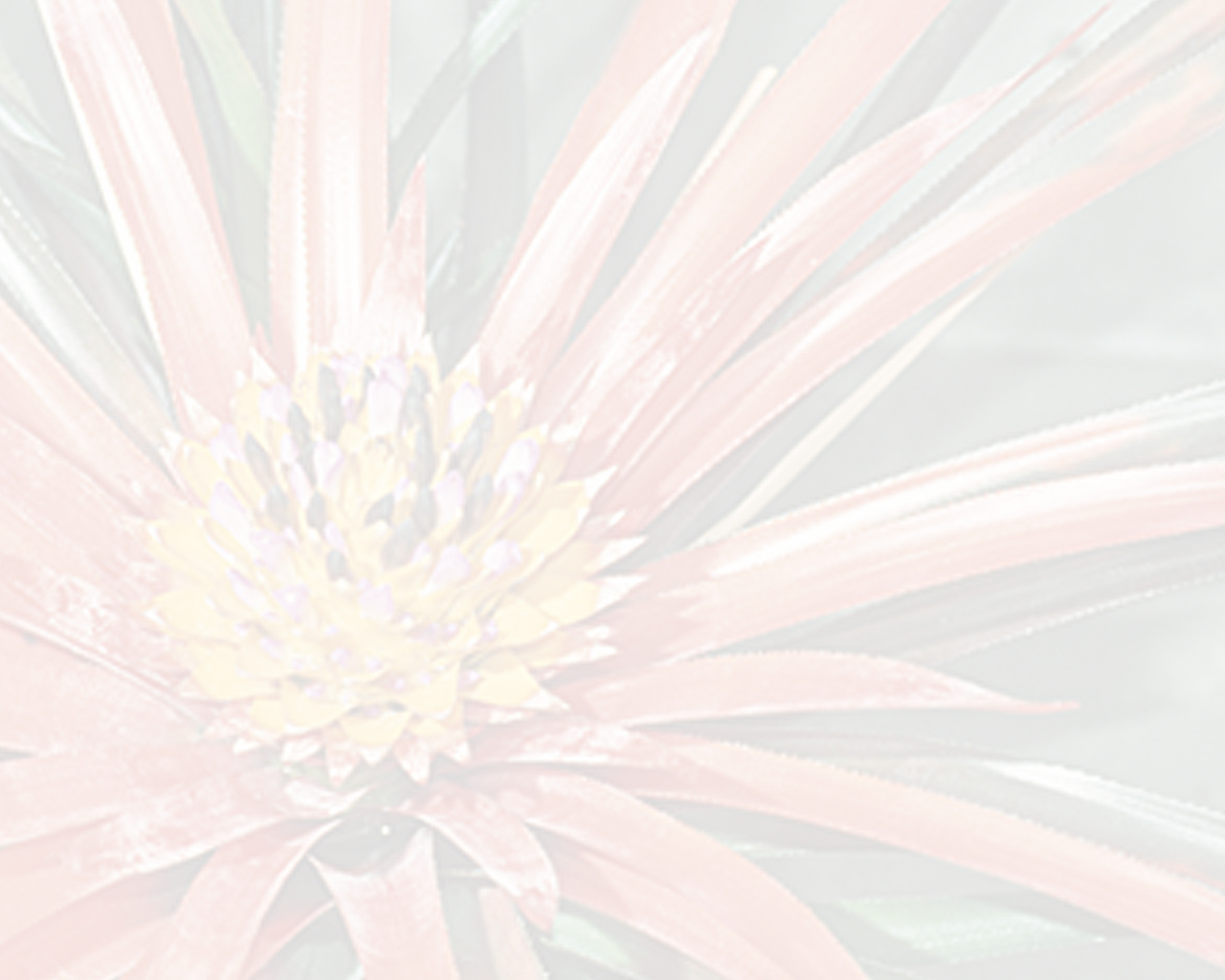
Streptocalyx williamsii L.B.Sm.
Literature references:
Comments:
- STREPTOCALYX WILLIAMSII by RICHARD OESER, M. D. in BSB 18(2): 36-7. 1968
Julian Marnier Lapostolle was probably ,the first amateur to bring into bloom in Europe, Lee Moore's "Aechmea spec. 370..' It was he who sent to Dr. Lyman B. Smith specimens of the plant for identification. The plant, Streptocalyx williamsii, was described in Bulletin XVII, page 99.
Believing that this bromeliad is bound to arouse the interest of both amateur and commercial growers, I am going to relate my personal experience with this plant from the day it arrived in my greenhouse as an unidentified Aechmea.
It all began in 1964 when my friend Dr. Rutschumann of Basle, Switzerland, brought me a hard-leafed thorny bromeliad of medium size that he had received from Lee Moore. It often happens that we get plants from miscellaneous imports, or that we raise them from seed of uncertain orgin, without the slightest idea of what the plants might turn out to be. Their cultivation is a matter of risk and expectation and hope. Alas, the result of six to eight years of patience is often only a sorry disappointment. Nonetheless, the grower tries again and again the lure of the unknown being too strong to resist.
I planted "Aechmea #370" not in a container but in a bed of peatmoss arranged over a layer of clay. AŁter the plant had properly rooted, it began to grow. It grew and grew and by the end of the second year had smothered most of the neighboring Vrieseas and Neoregelias. It has developed five offshoots, and they also had leaves 1m30 long.
In the spring of 1967 "Aechmea #370" covered one and a half square meters of .the limited planting area in my greenhouse, and I needed the space to accommodate other plants. Something had to be done. Should I just throw the plant away ? I decided to give it one more chance. It was the beginning of May and further frost was hardly to be expected. I transferred the plant with its large root system to a cement container and placed it in a sunny spot in the garden among some Pelargoniums. Here it would bloom or else be discarded.
Direct sunlight coaxed a beautiful purple hue from the formerly dark green leaves. But then we had a storm, which ravaged the garden. The long Aechmea leaves, possibly overgrown in the humid air of the greenhouse, were kinked, and later had to be trimmed. The glassy brittleness of the leaf-texture is a serious drawback. The plant needs to be protected from the wind. Its size and fragility are also a disadvantage in transportation.
Luckily my plant recovered without special care in spite of rain and storm. And in the beginning of August it happened - that which I had not dared hope for and what had seemed almost an impossibility - there was a bud in the depth of the imported shoot. It was pink with lighter stripes and felt hard to the touch. Slowly and steadily it grew and was already attractive even at that stage. But I had to wait .two and a half months for the flowers to appear. Finally out from behind the large bracts that were turning an ever deeper pink peeped rows to what I took to be the flowers, mindful of the fact that Aechmeas often have very small and rapidly decaying petals. The conical spike had by then attained a length of 35 cm and measured 28cm around. Its color was a bright rose pink. An exciting and eye-catching picture it was, and, needless to say, my plant was no longer doomed after producing such a spectacular flower display. In October, before the first night frost, we put our treasure back in the greenhouse. In there the bracts became even more red, and only then did the actual flowers reveal themselves. They are blue and measure 15mm. Sometimes twenty of them open on the same day, adding still another color to the charming combination. Just then the Bulletin arrived and solved the riddle of the plant's identity - it was Streptocalyx williamsii.
We owe Dr. L. B. Smith thanks for his clear scientific definition but owing to the nature of the description it cannot convey the color of the living spike or suggest the pleasure derived from witnessing the gradual flower development. Nor can it tell of the hardiness of this outstanding plant. When we realize that it is a native of the upper Amazon, we can hardly believe that it will bloom in our latitude out in the open. How much better it would do in Florida or in Southern California, where perhaps it can be kept outdoors the year round.
We here in Europe, forced to work in small greenhouses, grumble about Streptocalyx williamsii's great dimensions. But it is a known fact that pot cultivition and a meager diet will not stop bromeliads from blooming when their time is due, even if they have attained only one-half or one-third of their normal size. Temperature requirements are moderate.
(Translated from the German by Mrs. Adda Abendroth ) p. Brom Soc Bull

